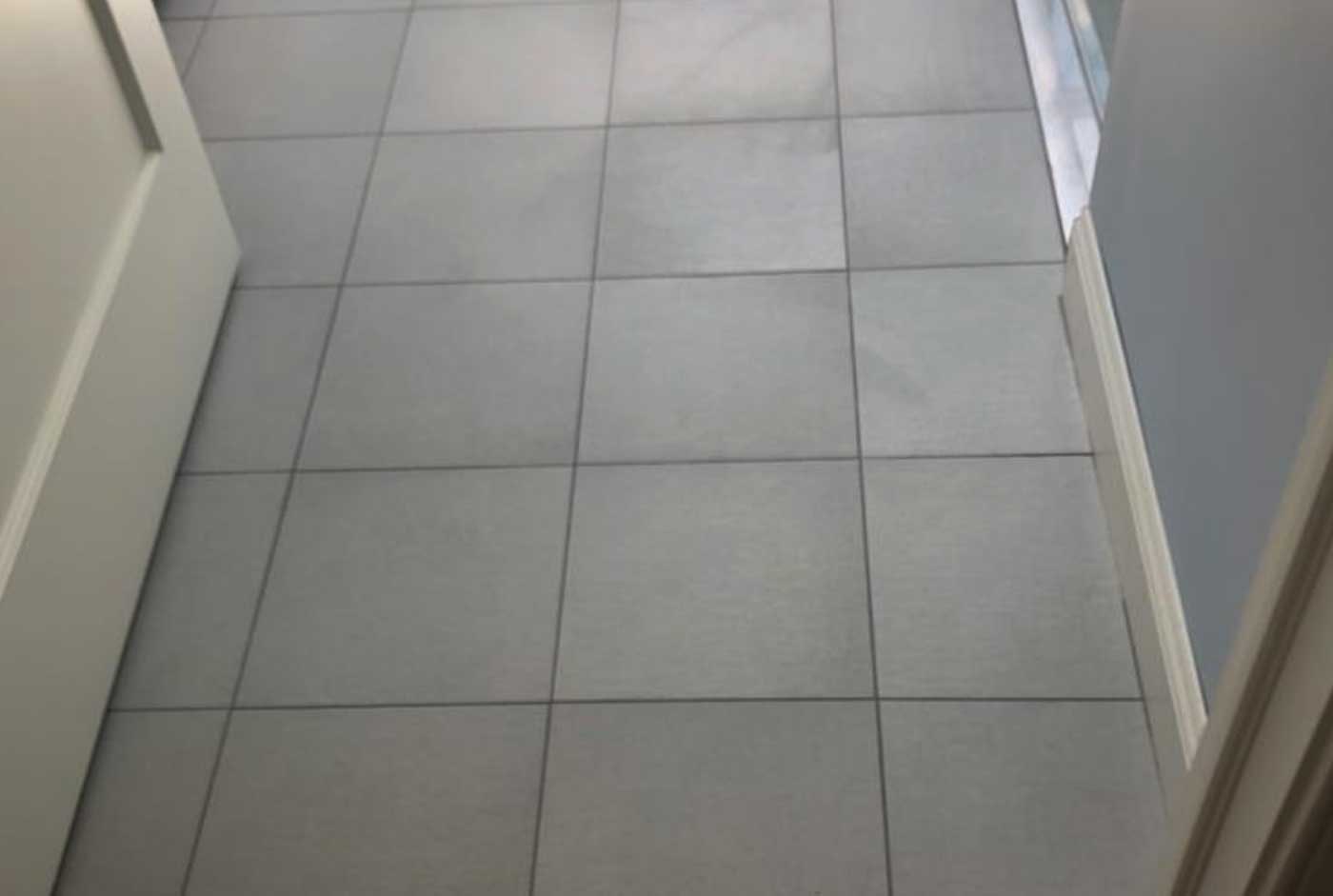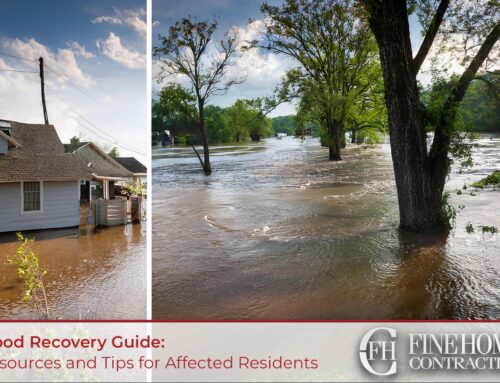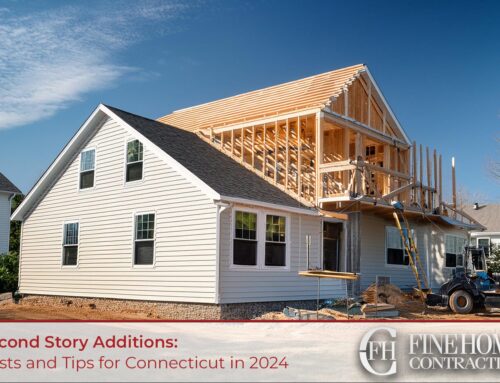Living with limited mobility can present unique challenges, especially when it comes to navigating your own home. Simple tasks that many people take for granted can become potential hazards for individuals with limited mobility. In this article, we will explore the ten biggest hazards at home for those with limited mobility and provide practical solutions to fix them. By addressing these hazards, individuals with limited mobility can enhance their safety and independence within their living spaces.
Fine Home Contracting is a Certified Aging in Place specialist, with experience in reimagining homes to be more accessible. Our teams identify the largest hazards present and develop a plan to make your home safer, more convenient, and completely accessible regardless of any mobility issues.
1. Slippery Floors
Slippery floors are a significant hazard for individuals with limited mobility. The risk of falls and injuries increases when floors are not slip-resistant.
To fix this hazard, consider the following solutions:
- Use non-slip mats or rugs in high-traffic areas.
- Apply anti-slip adhesive strips to the floor.
- Choose flooring materials with a textured surface for better traction, such as cork or rubber.
- Install hand rails and grab bars nearby any areas that are likely to remain a slip risk.

2. Poor Lighting
Insufficient lighting can make it difficult for individuals with limited mobility to navigate their homes safely. Shadows and dimly lit areas can lead to accidents and falls. Dark spaces that can result in increased trip hazards are commonly found in hallways, bathrooms, and basements.
To improve lighting and reduce this hazard, try the following:
- Install bright LED light bulbs throughout the house.
- Add motion-sensor lights in hallways and staircases.
- Use task lighting near workstations and reading areas.

3. Obstructed Pathways
Cluttered or obstructed pathways pose a significant risk for individuals with limited mobility, especially those using mobility aids like walkers or wheelchairs.
To clear pathways and create a safer environment, follow these steps:
- Remove unnecessary furniture and objects that obstruct movement.
- Ensure electrical cords are properly secured and out of the way.
- Keep pathways free of loose rugs or carpets that can cause tripping.
- Consider widening any pathways that are too thin to be comfortably walkable or wheelchair accessible.
4. Lack of Handrails and Grab Bars
The absence of handrails and grab bars can compromise the stability and balance of individuals with limited mobility. These essential support aids can prevent falls and provide assistance while navigating stairs, bathrooms, and other areas of the house.
To address this hazard:
- Install handrails along staircases and ramps.
- Place grab bars in bathrooms near toilets, showers, and bathtubs.
- Ensure handrails and grab bars are securely fastened and can support weight.
For more information on handrails and grab bars, check out our exhaustive guide here.

5. Unstable Furniture
Unstable furniture can be hazardous, as it can lead to falls and injuries. Individuals with limited mobility may use furniture for support or to maintain balance.
To make furniture more stable:
- Check that all furniture legs are even and properly secured.
- Avoid furniture with wheels or casters unless they have locking mechanisms.
- Consider using furniture straps or brackets to anchor items to walls.
6. Bathroom Hazards
Bathrooms are notorious for presenting hazards for individuals with limited mobility. Slippery surfaces and difficulties accessing essential facilities can increase the risk of accidents.
To make bathrooms safer:
- Install non-slip mats or adhesive strips in bathtubs and showers.
- Use a shower chair or bench for added stability and comfort.
- Consider installing a raised toilet seat or grab bars for easier transfers.
- Consider converting your tub or shower to a curbless shower to minimize fall risks.

7. Uneven or High Thresholds
Uneven or high thresholds can pose challenges for individuals with limited mobility, especially those using wheelchairs or mobility scooters. These thresholds can cause tripping hazards and difficulty in moving between rooms.
To address this hazard:
- Install threshold ramps to create a smooth transition between rooms.
- Replace high thresholds with lower alternatives or consider door widening if necessary.
- Ensure thresholds are well-maintained and free of any loose or damaged materials.
8. Lack of Accessibility Features
Homes lacking accessibility features can greatly impede the mobility and independence of individuals with limited mobility.
To improve accessibility:
- Install ramps or lifts for easier access to entryways and different levels of the house.
- Widening doorways to accommodate wheelchairs and mobility aids.
- Consider installing an elevator or stairlift for multi-story homes.
9. Unsafe Kitchen Setup
The kitchen can present numerous hazards for individuals with limited mobility, including reaching for items, handling hot surfaces, and navigating around appliances.
To create a safer kitchen environment:
- Store frequently used items within easy reach.
- Use adaptive kitchen tools and utensils designed for individuals with limited mobility.
- Install safety features such as stove guards and automatic shut-off devices.
10. Lack of Emergency Preparedness
In emergency situations, individuals with limited mobility may face additional challenges. Without proper emergency preparedness, their safety and well-being can be at risk.
To enhance emergency preparedness:
- Develop an emergency plan and communicate it with family members or caregivers.
- Keep emergency supplies, including medications and important documents, easily accessible.
- Consider using medical alert systems or wearable devices for added peace of mind.
Living with limited mobility presents unique challenges, but by identifying and addressing the ten biggest hazards at home, individuals can significantly improve their safety and independence. From ensuring slip-resistant flooring to installing handrails and grab bars, each step taken towards creating a safer living environment is a step towards enhanced well-being. By implementing the suggested solutions in this article, individuals with limited mobility can make their homes more accessible and enjoy a better quality of life.
FAQ:
Further Reading:
From Fine Home Contracting:
Other Reading:







